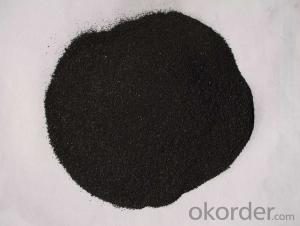Calcined Anthracite Coal Carbon Raiser for Steelmaking
- Loading Port:
- Tianjin
- Payment Terms:
- TT or LC
- Min Order Qty:
- 20 m.t.
- Supply Capability:
- 10000 m.t./month
OKorder Service Pledge
OKorder Financial Service
You Might Also Like
Quick Details
Place of Origin: Ningxia, China (Mainland)
Application: steel making
Shape: granule
Dimensions: FC90-95%
Product Type: Carbon Additive
C Content (%): 90-95% MIN
Working Temperature: -
S Content (%): 0.5%MAX
N Content (%): -
H Content (%): 0.6%MAX
Ash Content (%): 8.5%MAX
Volatile: 2%MAX
ADVANTAGE: low ash & sulfur
COLOR: Black
RAW MATERIAL: TaiXi anthracite
Packaging & Delivery
| Packaging Details: | In 1MT plastic woven bag. |
|---|---|
| Delivery Detail: | 30-40DAYS |
Specifications Calcined Anthracite Coal Carbon Raiser for Steelmaking Carbon Additve low Ash,S,P Structure Calcined Anthracite Coal Carbon Raiser for Steelmaking Shape: granule Dimensions: FC90-95% Product Type: Carbon Additive C Content (%): 90-95% MIN Working Temperature: - S Content (%): 0.5%MAX N Content (%): - H Content (%): 0.6%MAX Ash Content (%): 8.5%MAX Volatile: 2%MAX ADVANTAGE: low ash & sulfur COLOR: Black RAW MATERIAL: TaiXi anthracite Feature Calcined Anthracite Coal Carbon Raiser for Steelmaking Specifications (%): Grade F.C Ash V.M Moisture S Size CR-95 ≥95 <4 <1 <1 <0.3 0-30mm CR-94 ≥94 <4 <1 <1 <0.3 CR-93 ≥93 <6 <1 <1 <0.4 CR-92 ≥92 <7 <1 <1 <0.4 CR-91 ≥91 <8 <1 <1 <0.4 CR-90 ≥90 <8.5 <1.5 <2 <0.4 Image Calcined Anthracite Coal Carbon Raiser for Steelmaking FAQ: Calcined Anthracite Coal Carbon Raiser for Steelmaking Why we adopt carbon additive? Carbon Additives used as additive in steel making process. It made from well-selected Tai Xi anthracite which is low in content of ash, sulphur, phosphorus, high heat productivity, high chemically activation. Mainly industry property of it is: instead of traditional pertroleum coal of Carbon Additives, reduce the cost of steelmaking. Advantage: Calcined Anthracite Coal Carbon Raiser for Steelmaking 1.High quality and competitive price. 2.Timely delivery. 3.If any item you like. Please contact us. Your sincere inquiries are typically answered within 24 hours.
FC>95% ASH<4% S<0.3%
It is made from TaiXi anthracite.
instead of pertrol coke reduce the cost
As buyer's request.
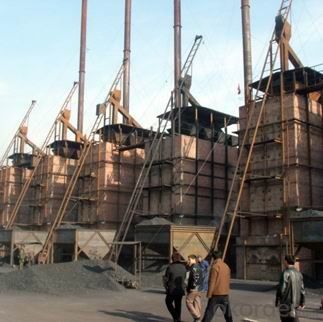
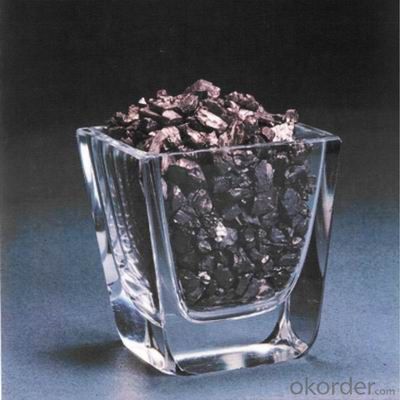
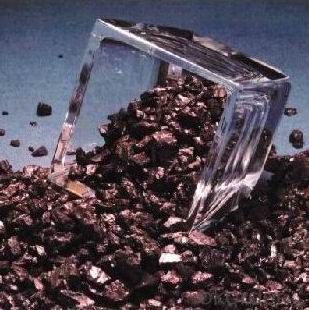

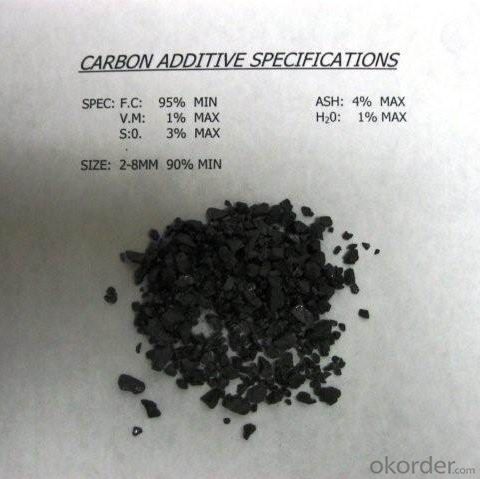
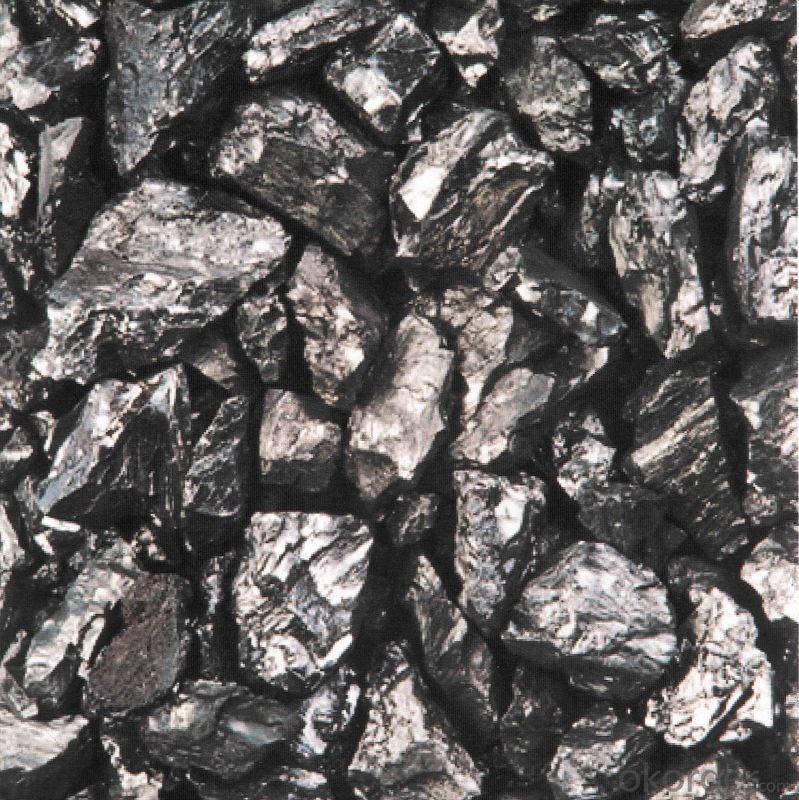
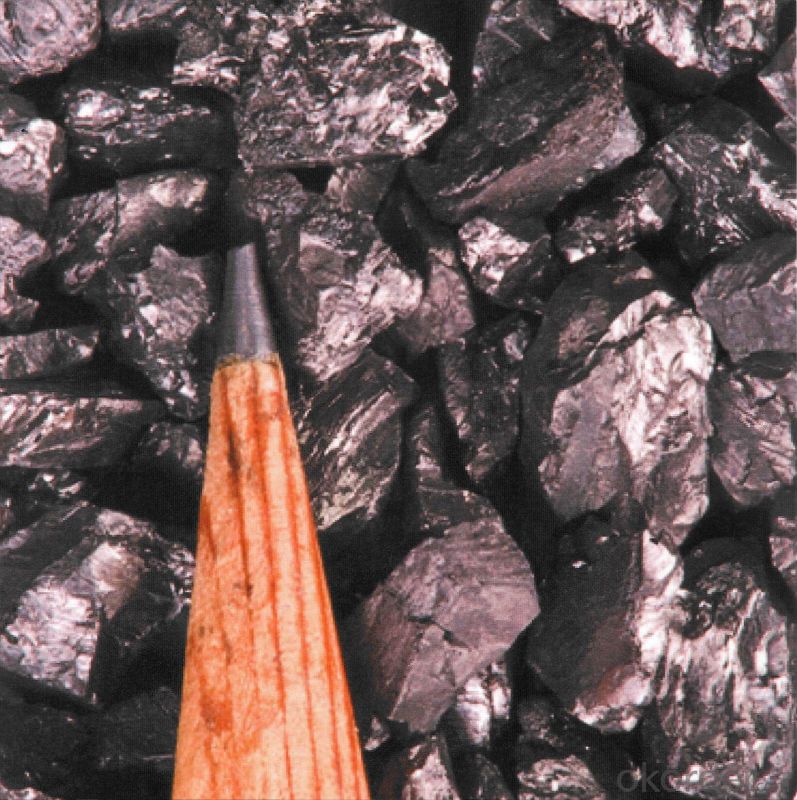
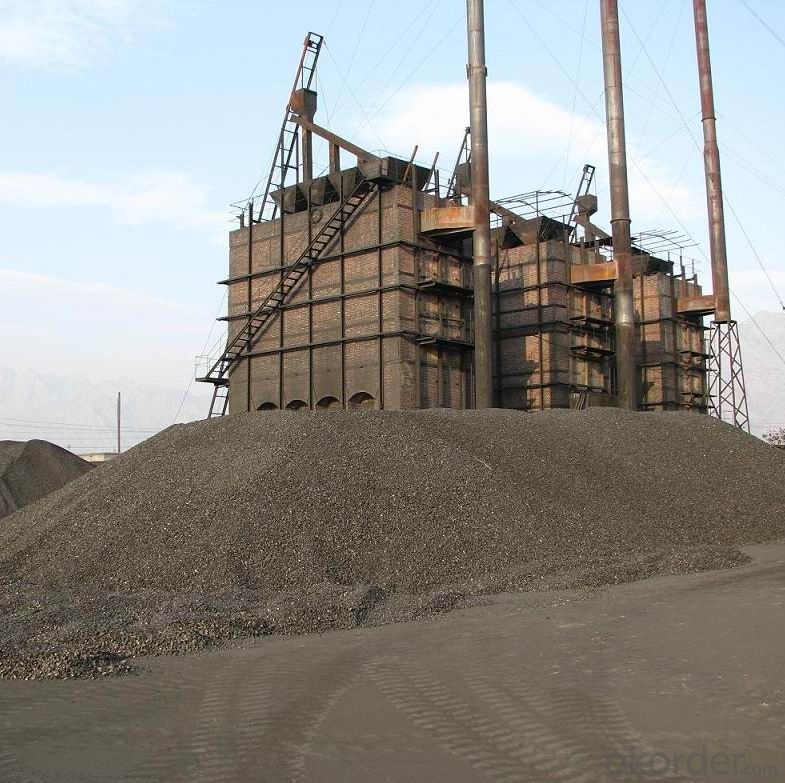

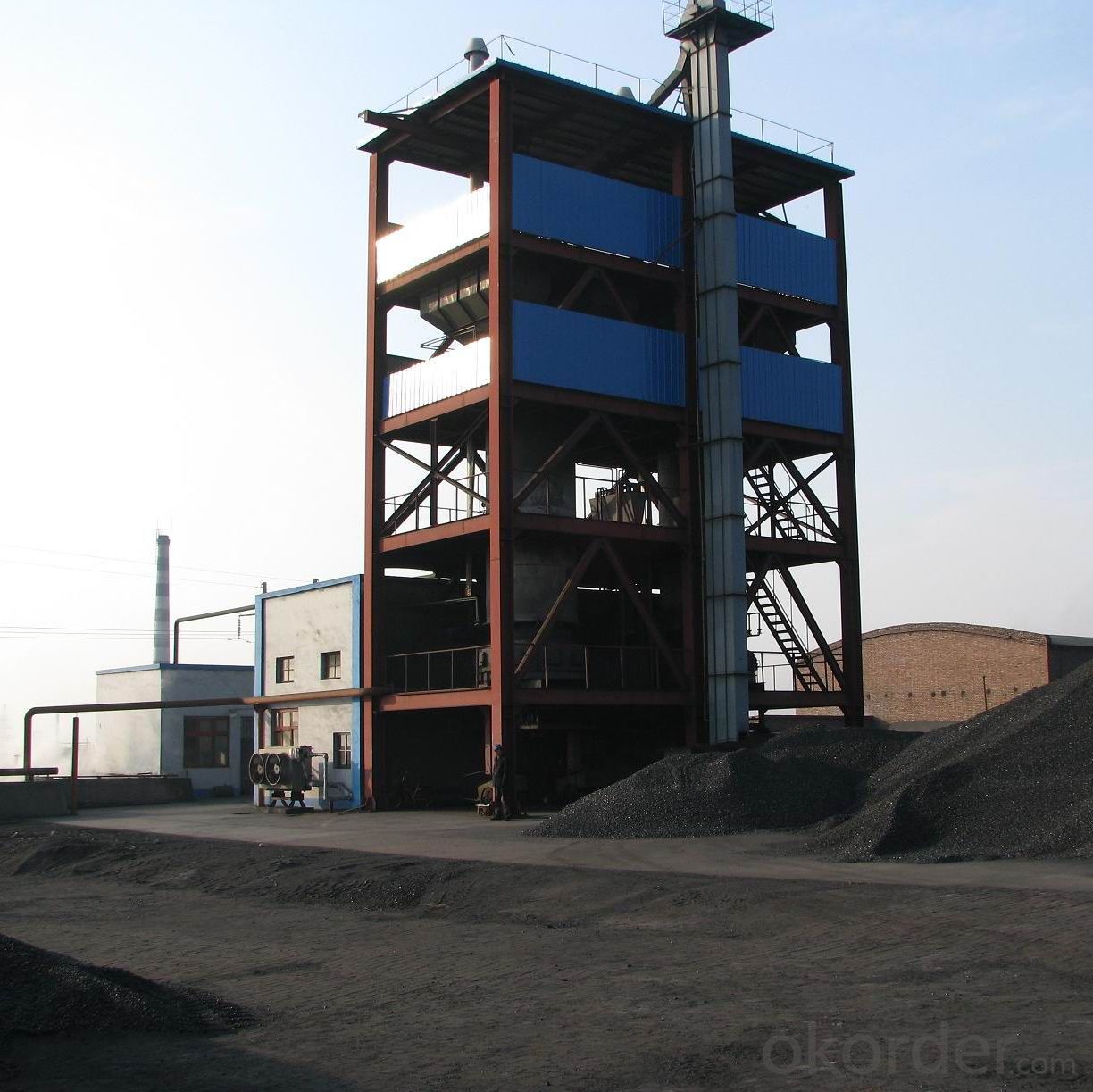
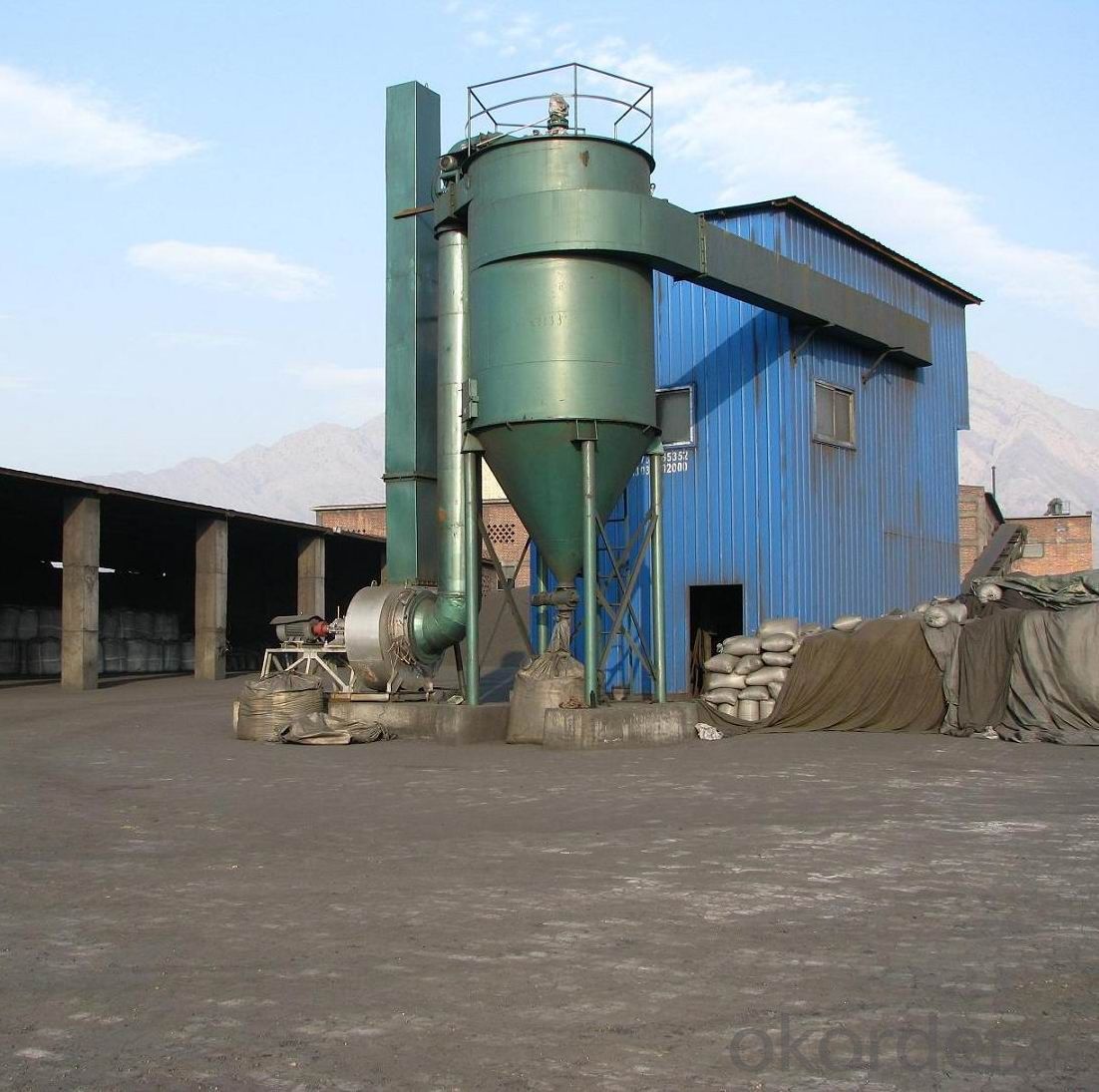
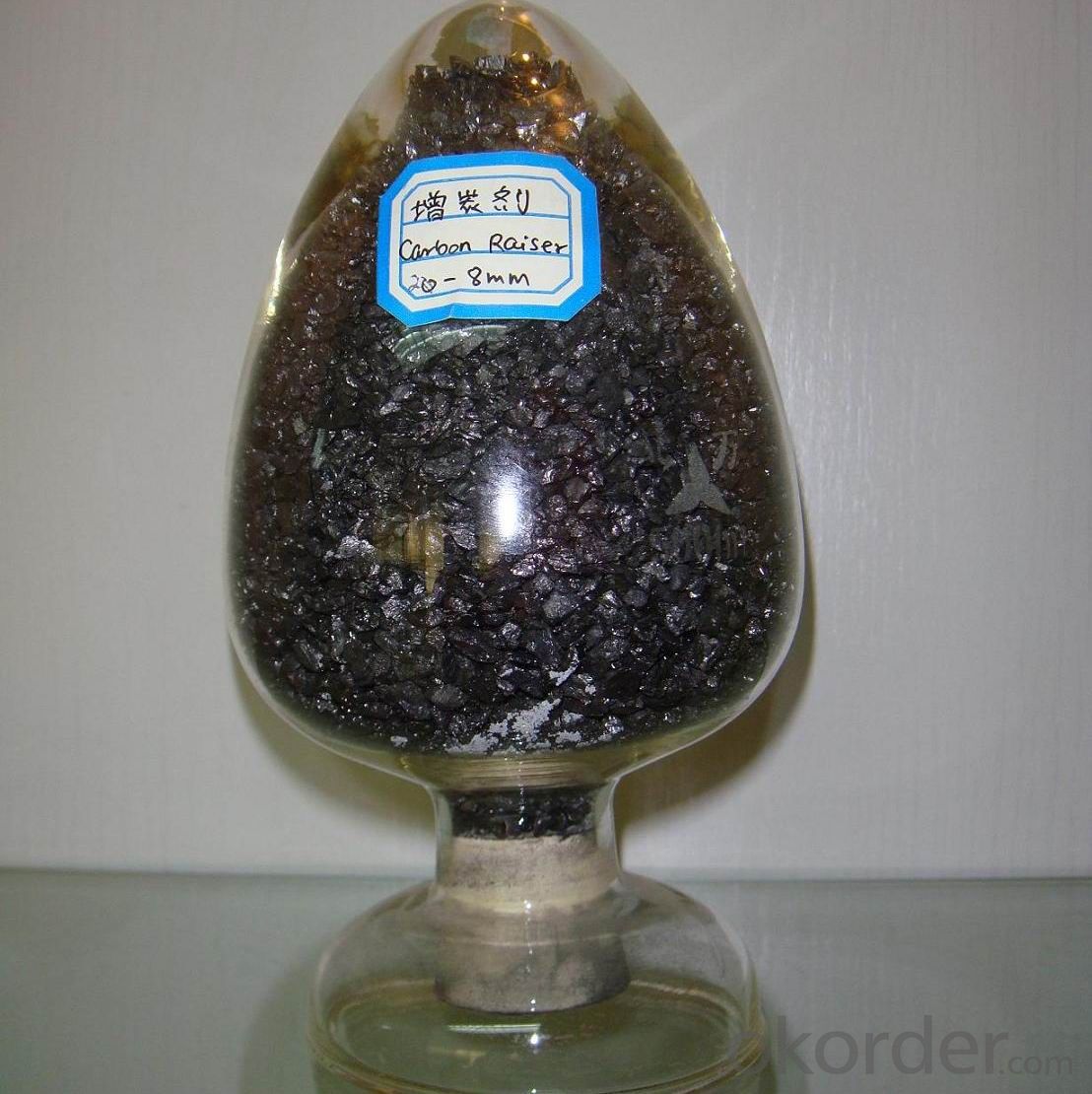
- Q:Does alumina react with carbon?
- NotThe smelting of Al in industry can only be done by electrolysis. Even at high temperatures, the reducibility of C is not as strong as Al, and the melting point of Al2O3 is very high. At this temperature, C has been gasified
- Q:What are the effects of carbon emissions on freshwater systems?
- Carbon emissions have significant effects on freshwater systems. One of the main consequences is the acidification of water bodies. When carbon dioxide dissolves in water, it forms carbonic acid, leading to a decrease in pH levels. This acidification can have detrimental impacts on freshwater organisms such as fish, amphibians, and invertebrates, as it disrupts their physiological processes and can even lead to their death. Furthermore, carbon emissions contribute to the phenomenon of global warming, which in turn affects freshwater systems. Rising temperatures can lead to increased evaporation, causing water scarcity in certain regions. This can have severe implications for both human populations and ecosystems that rely on freshwater resources. Additionally, the warming of freshwater systems can disrupt the balance of the ecosystem by favoring the growth of harmful algae blooms. These blooms are fueled by excess nutrients, such as nitrogen and phosphorus, which are often present in runoff from agricultural and urban areas. The increased temperatures coupled with nutrient enrichment can lead to the proliferation of harmful algae, which can produce toxins that are harmful to both aquatic life and human health. Moreover, carbon emissions can also indirectly impact freshwater systems through their contribution to climate change. As global temperatures rise, the melting of glaciers and polar ice caps occurs, leading to an increase in freshwater entering the system. This sudden influx of freshwater can disrupt the delicate balance of saltwater and freshwater ecosystems, affecting the distribution and migration patterns of various species. It can also lead to changes in salinity levels, impacting the survival and reproduction of marine organisms. In conclusion, carbon emissions have a range of negative effects on freshwater systems. These include acidification, water scarcity, the proliferation of harmful algae blooms, and disruptions to the delicate balance between saltwater and freshwater ecosystems. It is crucial to reduce carbon emissions and mitigate the impacts of climate change to protect the health and sustainability of freshwater systems.
- Q:How does carbon dioxide affect textile production?
- Textile production can be significantly impacted by carbon dioxide in various ways. Firstly, the manufacturing process of textiles generates carbon dioxide, which contributes to overall greenhouse gas emissions and worsens climate change. This, in turn, can result in long-term consequences like extreme weather events, rising temperatures, and sea-level rise. These outcomes can disrupt the supply chain and production of textiles. Furthermore, carbon dioxide emissions from textile production contribute to air pollution, which can adversely affect human health. Workers exposed to high levels of carbon dioxide may experience respiratory problems and other respiratory diseases as a result of the release of this greenhouse gas. Moreover, carbon dioxide is commonly used in the dyeing and finishing process of textile production. However, this practice can have detrimental effects on the environment. When carbon dioxide is released into water bodies during the dyeing process, it can contribute to water pollution, contaminating water sources and harming aquatic life. Additionally, excessive use of carbon dioxide in textile production can have economic implications. Since carbon dioxide is a byproduct of burning fossil fuels, its production is inherently tied to the consumption of non-renewable resources. The reliance on fossil fuels makes textile production vulnerable to price fluctuations, as the cost of carbon dioxide emissions and energy production can vary significantly. To mitigate the negative impacts of carbon dioxide on textile production, several measures can be implemented. These include adopting cleaner production techniques and technologies that reduce carbon dioxide emissions, such as utilizing renewable energy sources or implementing carbon capture and storage systems. Furthermore, investing in sustainable and environmentally-friendly materials, like organic cotton or recycled fibers, can help reduce the carbon footprint of textile production. Overall, reducing carbon dioxide emissions in textile production is crucial for the industry to become more sustainable and mitigate its environmental and health impacts.
- Q:What is latent carbon?
- If there is already one or more chiral centers in the molecule, the chiral center of the molecule will result in a non enantiomer, for example:The C-2 2- hydroxybutyric acid is chiral, is a chiral molecule.C-3 is connected with the two hydrogen atoms of the same and two not the same group, it is a potential chiral carbon atoms. When a hydrogen atom on the C-3 is a different from the other three atoms or groups (such as OH) instead, it generates a new chiral carbon atom. This new chiral carbon atom has two opposite configuration, and the chiral carbon atoms of the original configuration is the same, so the product is replaced by the diastereoisomers, their output is not equal, is often far away.This is not directly after separation of chiral molecules in latent chiral carbon atoms into chiral carbon atoms, and generate different amounts of stereoisomers called "chiral synthesis" (chiral synthesis), also known as "asymmetric synthesis" (asymmetric synthesis).
- Q:What are the consequences of increased carbon emissions on human migration patterns?
- Increased carbon emissions have significant consequences on human migration patterns. One of the most prominent effects is the exacerbation of climate change, leading to more frequent and intense natural disasters such as hurricanes, floods, and droughts. These extreme weather events can devastate communities, destroy infrastructure, and disrupt livelihoods, forcing people to migrate in search of safer and more stable environments. Rising sea levels, another consequence of carbon emissions, pose a significant threat to coastal regions and island nations. As sea levels continue to rise, low-lying areas become more prone to flooding and coastal erosion, making them uninhabitable. This displacement of populations, commonly referred to as climate refugees, can lead to mass migrations, putting additional strain on resources and infrastructure in destination areas. Moreover, carbon emissions contribute to changes in temperature and precipitation patterns, which can have a profound impact on agricultural activities. Shifts in growing seasons, increased frequency of droughts or floods, and the spread of pests and diseases can negatively affect crop yields and food security. This disruption in the availability of food and resources can push vulnerable populations to migrate in search of better livelihoods and food sources. The consequences of increased carbon emissions on human migration patterns also extend to health issues. Climate change can lead to the spread of diseases, such as malaria and dengue fever, as well as worsen air pollution, exacerbating respiratory problems. These health risks can force individuals and communities to relocate to areas with better healthcare infrastructure and conditions. In summary, increased carbon emissions have wide-ranging consequences on human migration patterns. The intensification of climate change, rising sea levels, disruptions to agriculture, and health risks all contribute to the displacement of populations, creating a need for individuals and communities to seek safer and more stable environments. Addressing carbon emissions and mitigating climate change is essential to minimize the negative impacts on human migration and ensure a sustainable future.
- Q:How can I see if a battery can be used to recharge it?Can not all carbon batteries charge?
- Final conclusion:Carbon batteries, alkaline batteries are not charged, the voltage is 1.5V, nickel cadmium batteries, nickel hydrogen batteries can charge voltage 1.2VPay special attention to the risk of leakage or explosion if you charge to a carbon battery or alkaline battery
- Q:How does carbon affect the formation of earthquakes?
- The formation of earthquakes is not directly influenced by carbon. The primary cause of earthquakes is the movement of tectonic plates, which are large sections of the Earth's crust that float on a semi-fluid layer underneath. These plates can collide, slide past each other, or move apart, resulting in stress building up along the boundaries between the plates. When this stress becomes too great, it is released as an earthquake. Nevertheless, carbon can indirectly impact the occurrence of earthquakes through its role in the Earth's carbon cycle and its contribution to climate change. Carbon dioxide (CO2) is a greenhouse gas, which is released into the atmosphere through various human activities, including the burning of fossil fuels. This excess CO2 in the atmosphere leads to global warming and climate change. Climate change can have several effects on the Earth's crust, some of which may indirectly influence seismic activity. For instance, global warming can cause the melting of glaciers and polar ice caps, resulting in changes in the distribution of mass on the Earth's surface. This redistribution of mass can cause adjustments in the Earth's crust, leading to increased stress along fault lines and potentially triggering earthquakes. Furthermore, climate change can affect groundwater levels and pore pressure within rocks through changes in precipitation patterns and the hydrological cycle. These alterations in water content can modify the strength and stability of fault lines, making them potentially more susceptible to slipping and causing earthquakes. It is crucial to note that the direct impact of carbon on earthquake formation is minimal compared to primary factors like plate tectonics. However, scientists are conducting ongoing research and investigations to understand the relationship between carbon emissions, climate change, and seismic activity.
- Q:How does carbon affect the formation of smog?
- Smog formation heavily relies on carbon's role, particularly through carbon monoxide (CO) and volatile organic compounds (VOCs). Burning fossil fuels, like in vehicles, power plants, or industrial processes, releases carbon into the atmosphere as CO and VOCs. These carbon emissions, especially in densely populated areas, contribute to smog formation. Smog consists of various air pollutants, primarily ground-level ozone, formed when nitrogen oxides (NOx) and VOCs react in sunlight's presence. Ground-level ozone formation starts with carbon monoxide. It reacts with nitrogen oxides and sunlight, resulting in ozone, a key smog component. VOCs, on the other hand, combine with nitrogen oxides in sunlight to create more ground-level ozone. Moreover, carbon particles, also called black carbon or soot, can contribute to smog formation. These particles absorb sunlight, heating the surrounding air and causing temperature inversions. These inversions trap pollutants near the ground, preventing dispersion and worsening smog formation. Controlling and preventing smog formation relies heavily on reducing carbon emissions. Implementing cleaner technologies, such as catalytic converters in vehicles and cleaner fuels, helps decrease CO and VOC release. Additionally, promoting renewable energy sources and reducing reliance on fossil fuels significantly reduces carbon emissions, thereby mitigating smog formation.
- Q:What are the differences between the three carburizing, nitriding and carbonitriding? What are the different effects on the material?
- Carbonitriding is the method of treating the surface of steel parts at the same time, penetrating the carbon atoms, nitrogen atoms of the river, forming the carbonitriding layer, so as to improve the hardness and wear resistance of the workpiece and to improve the fatigue strength of the river
- Q:I don't know the battery. Although I know the former is chemical energy, I want to know if the 1 grain size 5 can compare the charge capacity with the 1 grain 5 1ANot much of a fortune, but thank you very much for the enthusiastic friend who gave me the answer. Thank you!
- The carbon battery voltage is 1.5V, and the rechargeable battery is only 1.2V. That depends on the capacity of the rechargeable battery. You mean 1000MA?
1. Manufacturer Overview |
|
|---|---|
| Location | |
| Year Established | |
| Annual Output Value | |
| Main Markets | |
| Company Certifications | |
2. Manufacturer Certificates |
|
|---|---|
| a) Certification Name | |
| Range | |
| Reference | |
| Validity Period | |
3. Manufacturer Capability |
|
|---|---|
| a)Trade Capacity | |
| Nearest Port | |
| Export Percentage | |
| No.of Employees in Trade Department | |
| Language Spoken: | |
| b)Factory Information | |
| Factory Size: | |
| No. of Production Lines | |
| Contract Manufacturing | |
| Product Price Range | |
Send your message to us
Calcined Anthracite Coal Carbon Raiser for Steelmaking
- Loading Port:
- Tianjin
- Payment Terms:
- TT or LC
- Min Order Qty:
- 20 m.t.
- Supply Capability:
- 10000 m.t./month
OKorder Service Pledge
OKorder Financial Service
Similar products
New products
Hot products
Hot Searches
Related keywords
